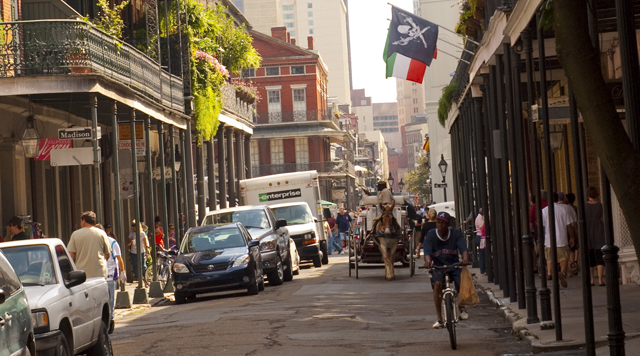
Leaders at Bike Easy, a biking and walking advocacy organization based in New Orleans, knew that the changes should include improvements to make biking and walking safer and more convenient.
With help from a Rapid Response grant from Advocacy Advance, Bike Easy launched a campaign to ensure that downtown resurfacing implemented New Orleans’s new Complete Streets policy with bike lanes, bike parking, pedestrian islands and traffic calming along the renovated streets.
Kicking Off a Complex Match
Bike Easy found broad support at the initial public meetings. “We met a lot of people who were speaking up for biking and walking infrastructure,” said Jamie Wine, Executive Director of Bike Easy.
The Department of Public Works’ original game plan reflected public sentiment. Plans that DPW officials discussed in the summer of 2012 featured sharrows on slow, narrow streets as well as a lane reduction and 8 blocks of new bike lanes along Decatur Street, a major downtown thoroughfare.
But in the fall, Jamie was surprised to hear from an ally inside DPW warning him that the city had reduced the number of bike lanes on Decatur without giving public notice.
Jamie was shocked at the quick turnover. “We expected the project would have 8 blocks of bike lanes in both directions, but the plan they unrolled involved about 2 ½ blocks on only one side.”
Installing the full bike lanes on both sides would have meant taking out a lane of auto traffic, and the sudden change of plans seemed quite a setback for biking & walking priorities originally outlined by the DPW and supported by the community.
Taking it to the Streets
After hearing about the alarming changes, and knowing there was less than a week to spare before the contractors laid the paint, Jamie reached out to the mayor’s office but received no response.
Finally, Bike Easy took a bold move, “I emailed the Mayor’s office and said, ‘if you don’t talk to us about this, we’re going to have a rally,’” Jamie recalled. “They reached out and said ‘don’t rally – let’s work this out.’ So we held off.”
Bike Easy rallied their members and advocates over the course of two weeks. During that time, the French Quarter Business Association, the elite Vieux Carre, the University of New Orleans Transportation Institute, and other advocates like Ride New Orleans and KidsWalk Coaliton all came to the table with letters of support.
Moreover, the key support of Councilmember Kristen Palmer, who had championed biking issues in the past for the prime location in the French Quarter, came on board along with a new ally in Councilmember Stacy Head.
“Kristin’s office called in DPW into a meeting in chambers with Bike Easy,” recalled Jamie. “She said, ‘These are our constituents, and they’re saying that a lane reduction will not be controversial. Go ahead with it, and we will field any political blowback.’”
Still, though, DPW would not budge. “They said no way,” Jamie recalled.
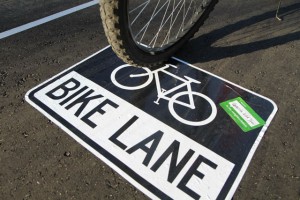 A temporary bike lane at the Decatur rally. Photo: Bike Easy/Facebook
A temporary bike lane at the Decatur rally. Photo: Bike Easy/FacebookWith negotiations falling short and the clock running down, Bike Easy went on the offensive and rekindled the rally.
“On Tuesday, November 20, we rallied in the core of the French Quarter,” Jamie said. “They had the lane closed because they had just laid the pavement and steamrolled it, but hadn’t painted it yet. We worked with Neighborland to put down fake bike lanes. Hundreds of residents showed up, garnering signs and we had a blast demonstrating how bike lanes make it easier and safer for all road users along Decatur Street. We got a lot of honks for bike lanes from cars and the horse buggies too!”
The rally proved a smart play: with the large crowd Bike Easy earned coverage on local television stations and blogs and really created a buzz around the issue.
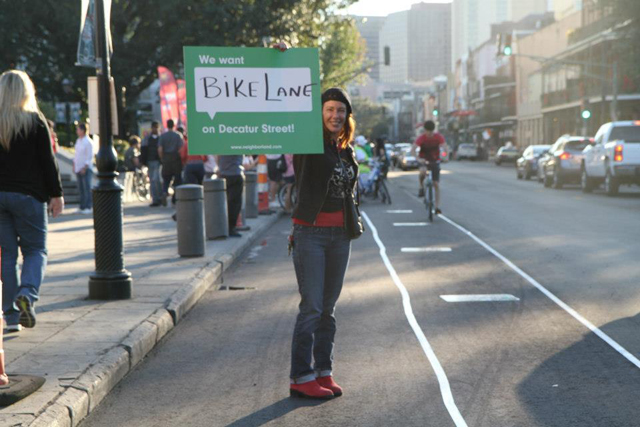
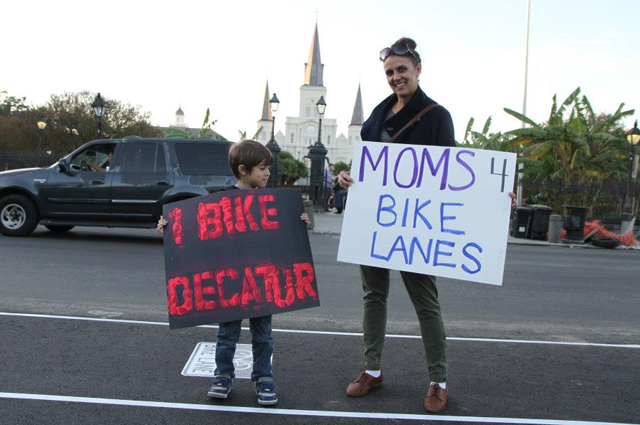
Surprise Touchdown
A week later, when the City painted the resurfaced roads, Jamie was pleasantly surprised to discover 6 blocks of two way bicycle lanes — more than double the 2 ½ blocks of lanes that DPW had promised.
“We didn’t know that we’d get the additional blocks of bike lanes until they were actually down on the ground,” recalled Jamie. “Advocates from other cities like Seattle and Portland were surprised that we were able to influence the design so late in the project timeline.”
Overall, the campaign was a big win for Bike Easy. By the time the Super Bowl rolled into New Orleans, downtown boasted 6 new blocks of bicycle lanes, 4 pedestrian islands with high-visibility crosswalks, lane reductions on 4 blocks and 2 miles of shared lane markings and signage.
“I’m really pleased with it. I’m surprised at how much traction we got,” Jamie said.
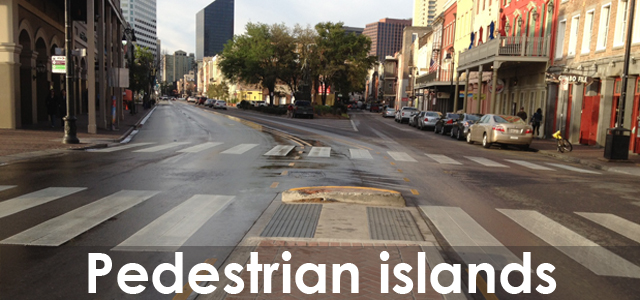
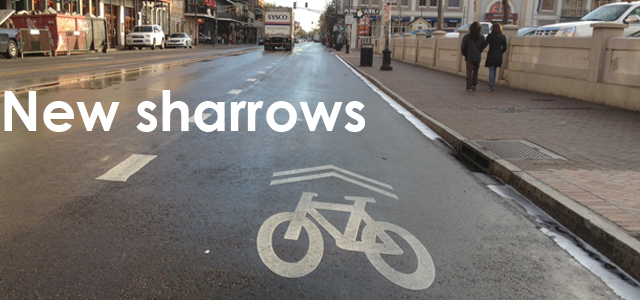


Thanks to the Rapid Response grant, the organization also won new allies.
“The profile that we gained has been even greater than our gains from the actual infrastructure,” said Jamie. “We won new and more committed partners from this process. We’re going to have more insight and more say and relationships going forward.”
The Next Season
So what’s next for Bike Easy?
Going forward, New Orleans advocates hope to encourage greater transparency at the public works department. DPW has pledged to work with Bike Easy on plans to implement complete streets.
Jamie said that the city is planning 12 new miles of bike lanes, and public officials are more engaged than ever. “The personal assistant to the mayor has called me several times to talk about bike share and involving the mayor in bike to work day again,” Jamie said.
Related links
- Bike Easy’s big blog post on the Decatur Street rally.
- Media coverage of the Decatur rally in NolaVie, WGNO, and NOLA Defender.

